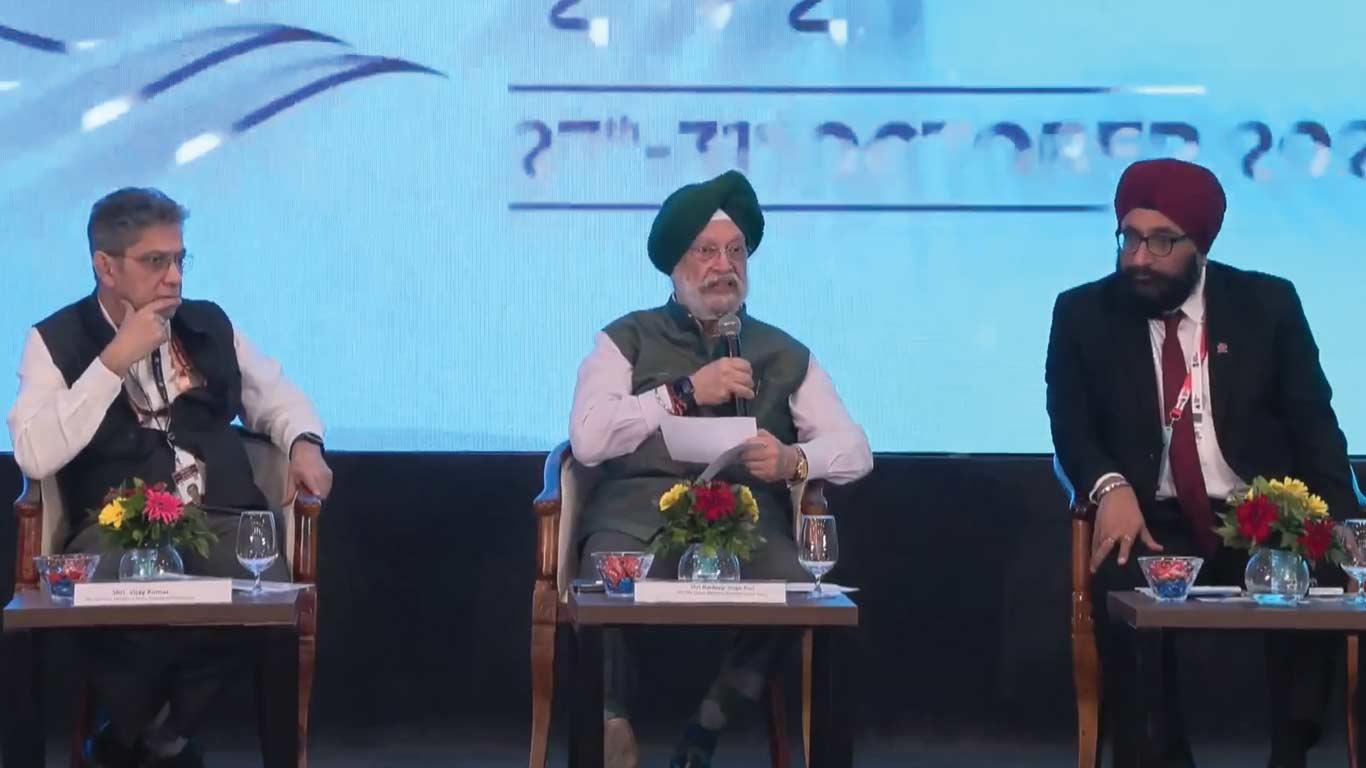
India Must Boost Indigenous Shipping Fleet To Support Growing Energy Needs: Minister Puri
Puri noted that India's economy has expanded to about USD 4.3 trillion, with nearly half dependent on external trade, underscoring the importance of shipping and global connectivity.
Highlighting India's growing energy requirements, the minister said the country now consumes around 5.6 million barrels of crude oil per day, compared to 5 million barrels four and a half years ago, and is poised to reach 6 million barrels per day soon.
Citing the International Energy Agency, he added that India is expected to account for nearly 30 percent of the increase in global energy demand in the next two decades, up from an earlier projection of 25 percent.
During FY 2024–25, India imported about 300 million metric tonnes (MMT) of crude and petroleum products and exported 65 MMT, with oil and gas comprising 28 percent of total trade by volume, making it the largest commodity group handled at ports.
India currently imports 88 percent of its crude oil and 51 percent of its natural gas, making maritime logistics essential for energy security, he said.
Freight costs remain a significant expense for the nation's fuel imports, with oil transport costing USD 5 per barrel from the United States and USD 1.2 per barrel from the Middle East. State-run oil firms spent nearly USD 8 billion on vessel chartering over the past five years.
Puri highlighted the need to grow the Indian-flagged and Indian-owned fleet, which currently carries only 20 percent of India's trade cargo.
Measures underway include aggregating PSU cargo for long-term charters, advancing the Ship Owning and Leasing (SOL) model, operationalising a Maritime Development Fund for affordable vessel finance, and rolling out Shipbuilding Financial Assistance Policy 2.0 with special incentives for LNG, ethane and product tankers.
He said the sector has undergone substantial transformation over the past decade, with major port capacity rising from 872 MMT in 2014 to 1,681 MMT, and cargo handled increasing from 581 MMT to around 855 MMT.
Efficiency gains include a 48 percent reduction in turnaround time and a 29 percent decline in idle time.
Indian shipyards-including Cochin Shipyard, Mazagon Dock, GRSE Kolkata, and Hindustan Shipyard-are manufacturing advanced vessels, supported by international collaborations such as Cochin Shipyard with L&T and Daewoo and partnerships with Mitsui OSK Lines.
With global shipyards booked for years ahead, Puri called for encouraging international firms to build vessels in India.
Looking ahead to 2047, the minister said the maritime sector is likely to attract Rs 8 trillion in investment and generate 1.5 crore jobs.
(KNN Bureau)
Legal Disclaimer:
MENAFN provides the
information “as is” without warranty of any kind. We do not accept
any responsibility or liability for the accuracy, content, images,
videos, licenses, completeness, legality, or reliability of the information
contained in this article. If you have any complaints or copyright
issues related to this article, kindly contact the provider above.


















Comments
No comment